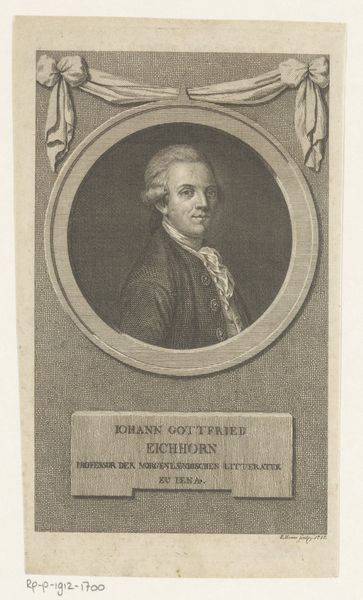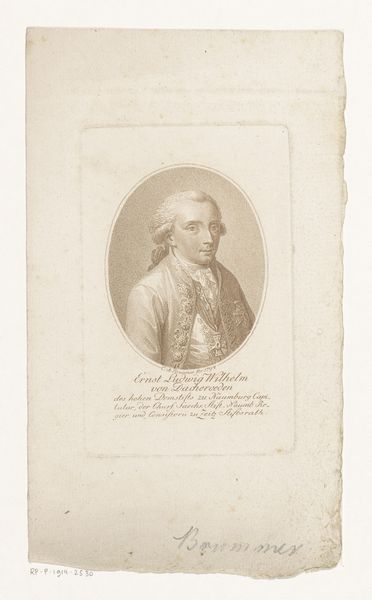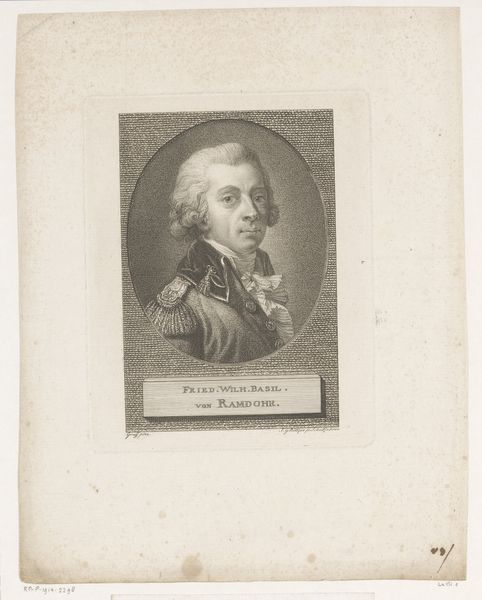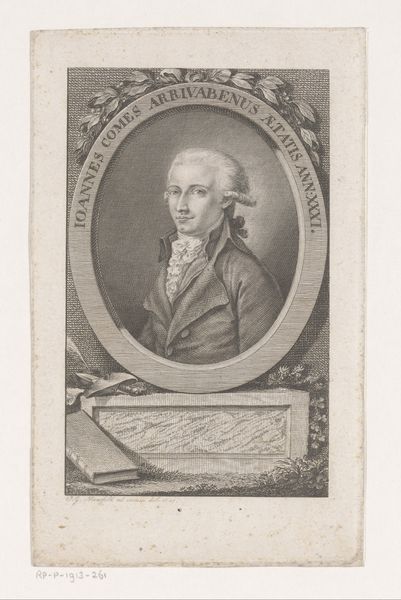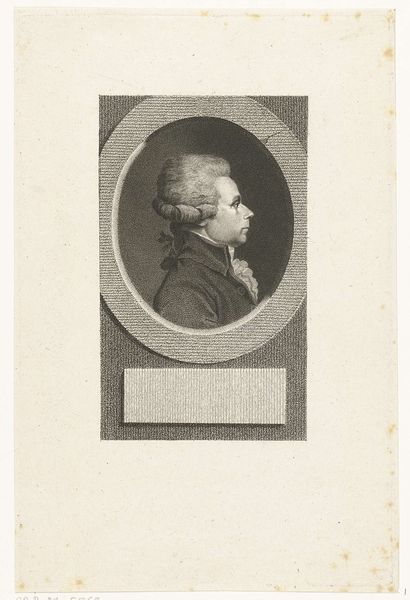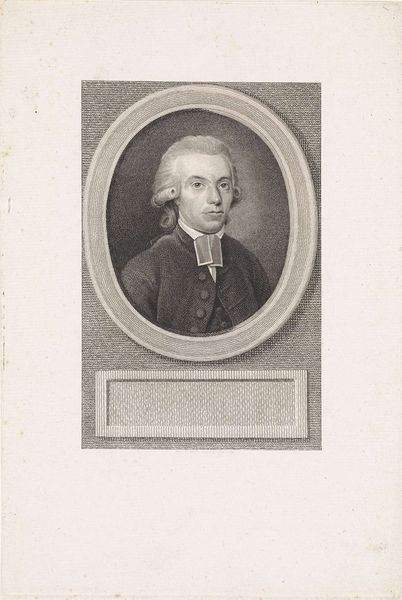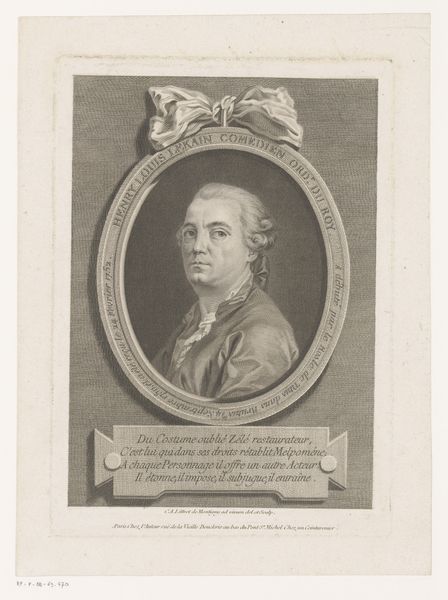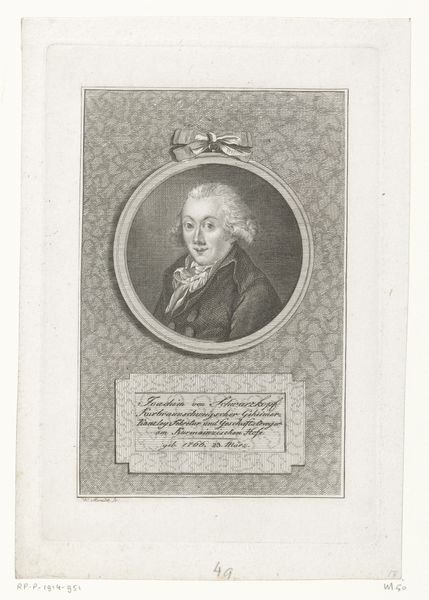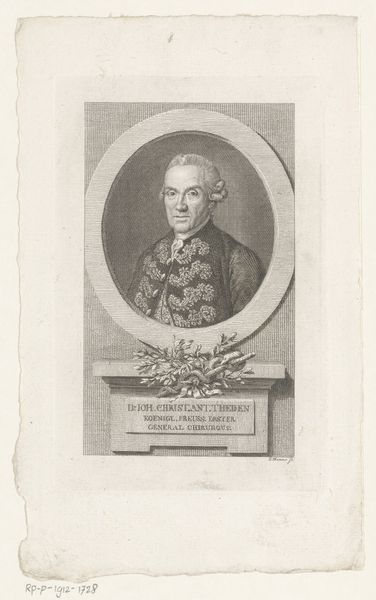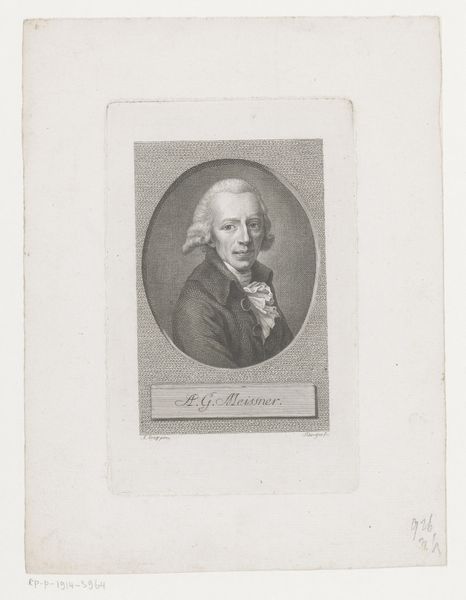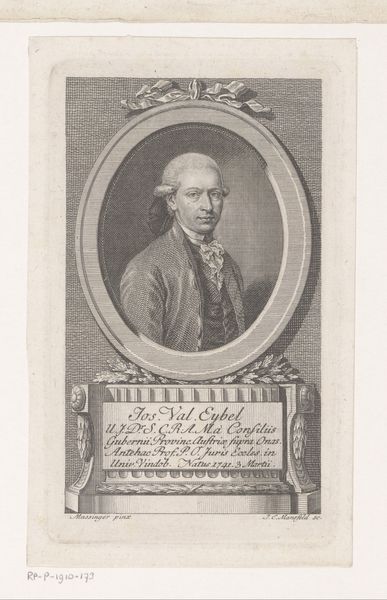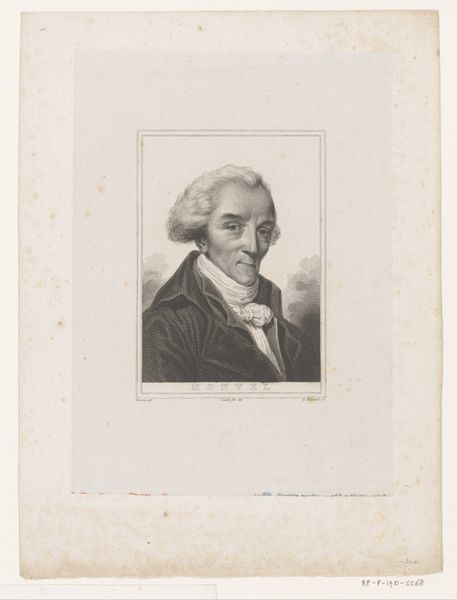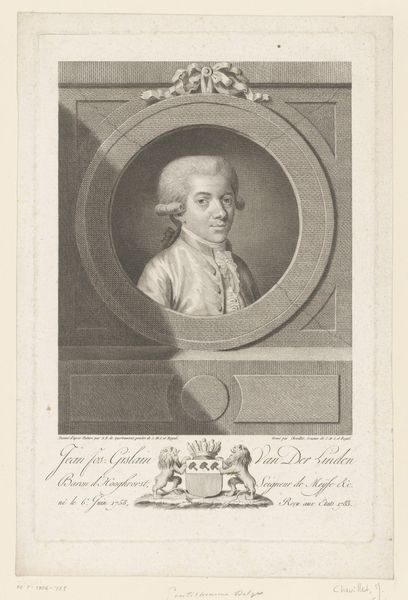
engraving
#
portrait
#
pencil drawn
#
neoclacissism
#
old engraving style
#
line
#
engraving
#
realism
Dimensions: height 175 mm, width 125 mm
Copyright: Rijks Museum: Open Domain
Curator: Welcome. We are standing before Christoph-Wilhelm Bock’s "Portret van Johannes von Müller," created in 1789. Bock captures the likeness of Johannes von Müller, rendered meticulously with engraving techniques, and exemplifying neoclassical portraiture during the late 18th century. Editor: Ah, first impressions...it feels strangely both grand and subdued. I get the powdered-wig seriousness of the era, but something about those precisely etched lines gives it this fragile, almost melancholic air. Like a butterfly pinned in a display case, but a butterfly with strong opinions. Curator: Indeed. The piece speaks to the era’s emphasis on rationalism and order. Portraits like these weren't merely likenesses; they were statements of social standing and intellectual prowess. The circular frame around Müller acts as both a compositional device, hearkening back to Roman and Greek motifs, and a mechanism to confine, emphasizing structure over emotional fluidity. Considering what we know about the Enlightenment's promises and contradictions regarding social progress and political representation, the controlled lines also convey restriction. Editor: Restriction, yes! Like history holding its breath. And I can't help but think about accessibility. Engravings allowed for wider dissemination of images, meaning Müller’s likeness could reach a much broader audience than, say, an oil painting. He’s frozen in time, and reproducible. Almost like a proto-meme for the educated classes of the day! The texture created by the engraving feels kind of democratic too, a million tiny lines working together...it's oddly egalitarian in its complexity. Curator: Exactly. The choice of engraving further highlights the dissemination of knowledge, so central to Enlightenment ideals. However, we also need to be critical, noting that this 'knowledge' often privileged the perspectives of a very particular, elite class of people – generally white men – which further solidified the pre-existing structure of society. Editor: Always got to poke the bear of privilege, don’t you? Good. This isn't just some dusty old portrait. There’s something universal in that controlled ambition; that desire to be remembered, cataloged, justified. I can feel that push and pull, even centuries later. I suppose, for me, art is successful if you can still relate despite any historic or social context. Curator: A vital point! By exploring these complex layers, this portrait moves beyond simply an image to becomes a reflection of the era's socio-political currents. Thank you for enriching my perspective on this further. Editor: My pleasure. Sometimes, a stroll down history lane is what is needed to appreciate and value its context and contributions in relation to today's era.
Comments
No comments
Be the first to comment and join the conversation on the ultimate creative platform.
